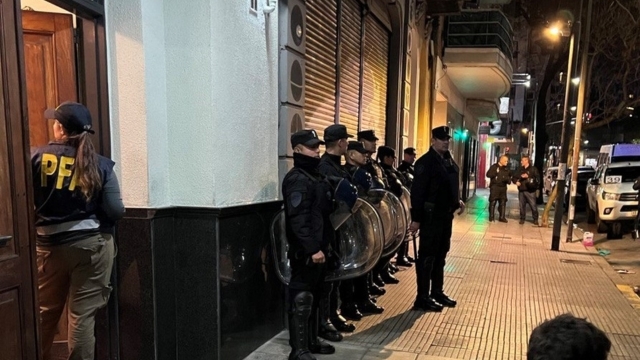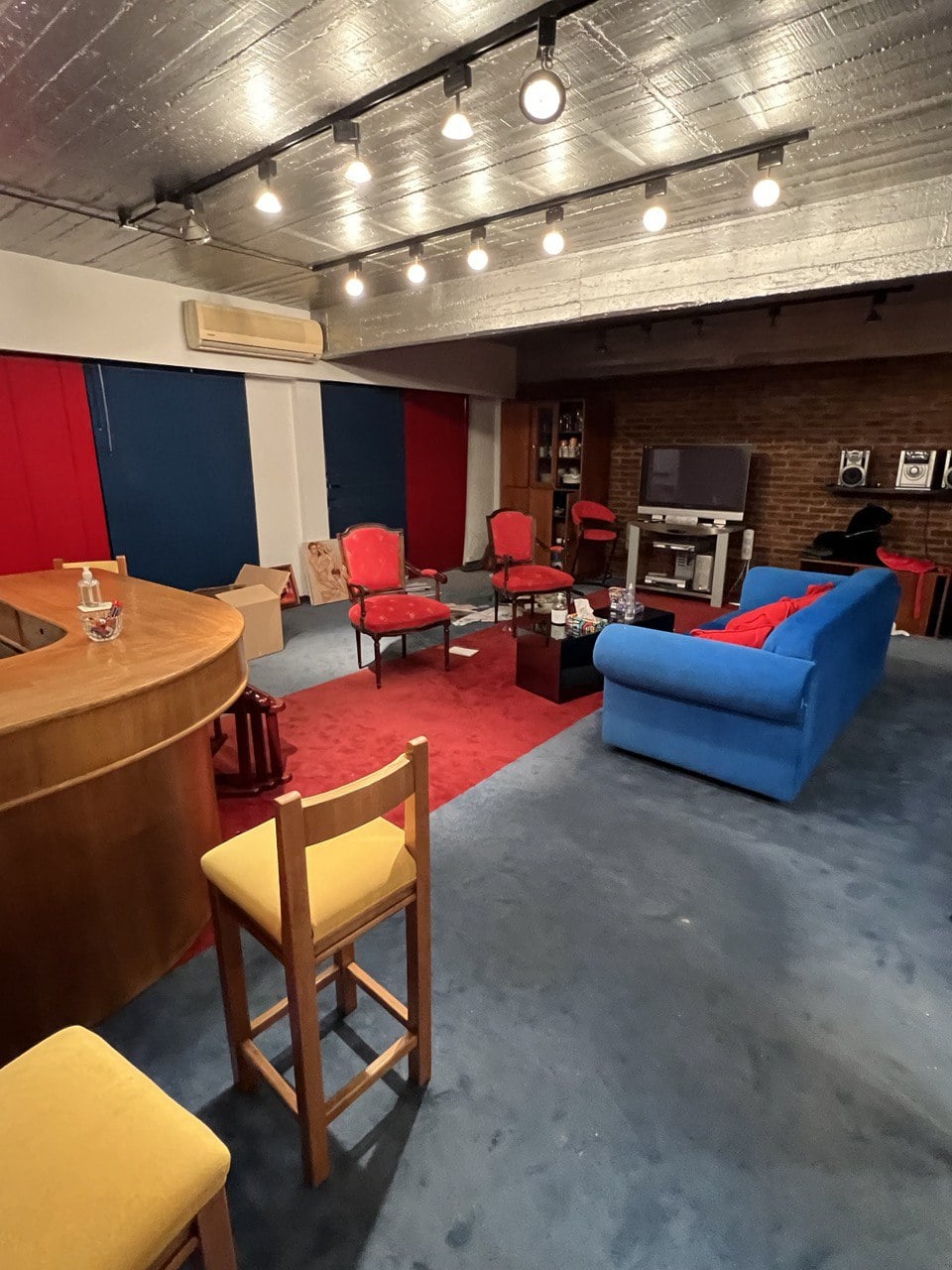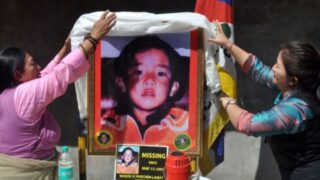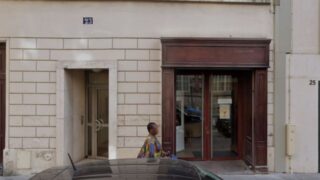On August 12, 2022, fully armed SWAT team police raided a cafeteria and some fifty private homes of students of what they claimed was a criminal “cult.”
by Massimo Introvigne
Article 1 of 5.


The date was August 12, 2022. It was a quiet evening in Villa Crespo, a middle-class neighborhood in Buenos Aires traditionally associated with Jews and the Jewish history of the city, although it is today multicultural. In a cafeteria located on the ground floor of a building in an avenue named after the State of Israel, some fifty people were listening to a class about philosophy. Most of them were in their final years of middle age, the youngest in their forties and the oldest in their eighties. A military amputee was drinking his coffee, as did some ladies. A woman living upstairs in the same building was wondering where her cat had gone—she had left the door of the apartment open so that the pet might freely come and go.
All of a sudden, a thunderous noise was heard. Fully armed SWAT team police broke the door and entered the coffee shop. The retired military man recognized the weapons for what they were: loaded, with safety removed, and ready to shot. In a few seconds, all hell broke loose. The police went up to all the apartments and started breaking all the doors, pursued in vain by their owners who offered the keys to the officers so that they could enter without destroying the entryways. Once inside, the police searched everywhere, gutting furniture and throwing all the content of the cabinets on the floors. When the agents left, almost all owners complained that money and jewels had been stolen.


Thanks to the cat, the door that the pet owner had left open was spared. She rushed to her apartment and was confined by the agents on the balcony. They destroyed everything and—she reported to me—drank her expensive bottles of wine, until she dramatically jumped into the apartment and smashed one of them on the floor, telling the officers to stop. The agents were looking for her personal journal. Not finding it in the apartment, they asked her to go and fetch it for them wherever it might be. She refused unless they could show a judge’s warrant for the journal. She told me the story of one agent threatening her with a gun, to which she replied: “Kill me if you want, I will not give you the journal.” She didn’t.
Meanwhile, in the State of Israel Avenue, dozens of agents and reporters were taking pictures of people taken out of the building, whom the media interpreted either as criminals or “victims” rescued from them. Similar scenes took place around Buenos Aires during all the night, in another fifty private apartments of members of what was believed to be the same criminal organization. In one of those apartments, a man was badly beaten by the police for no reason (it came out later they had mistaken him for somebody else). All in all, twenty persons were arrested and warrants for arrest were issued against another eight, four of whom were abroad. Three were detained at Buenos Aires airport before boarding a plane to the United States.


A distinguished lady living in a luxury apartment a few blocks from the coffee shops where she was listening to the lesson understood what was going on, and told the agents that she had a very expensive armored door. Her offer to open it with her keys to avoid its destruction was turned down. She showed me the picture of the wall destroyed by the agents to enter an apartment whose keys had been offered to them.
At the last floor of the State of the Israel Avenue building, the agents broke yet another door, of the apartment of a well-known female musician, hoping to find the evidence they were looking for. They had been told there was a “museum of sex” there. All they found was a small painting depicting three naked persons united in an embrace, erotic, yes, but not part of pornography under its most technical definition, since no genitalia were showed, only one female breast. They noted an abundance of the color red in the decoration of the apartment, and put in their notes it was reminiscent of a brothel.
The painting was duly put on display for the media, together with some old and ruined commercial pornographic VHS videos found elsewhere in the building. The inhabitants claimed they were part of the inventory of a nearby shop that had been flooded with water. They had purchased the whole inventory to help the owner, who was their friend, and had forgotten the videos, most of them not pornographic, stored somewhere in the building—and who would watch in 2022 pornographic VHS of the 1980s anyway.
It was now March 2023, and I was writing this article in the very same “museum of sex” apartment, under the smiling gaze of the famous trio of lovers: the painting had been seized but a superior court had ordered it to be given back to the owner. All those detained had also been liberated by a Court of Appeal after almost three months spent in jail, in conditions they described as horrible. Most of them went back to their apartments in the State of Israel Avenue, and elsewhere, but the one once nicknamed the “museum of sex” was temporarily vacant, and I was allowed to use it as a base for interviewing those involved in the story, taking notes, and studying documents. By the way, I was told that the humorous name “museum of sex” came from the fact that the musician who owned the apartment once had there a showcase with her collection of sex toys of various epochs and shapes. But it had since long been removed when the police came.


What was it all about? And why was I sitting in the famous or infamous apartment, looking at the flags of the balconies in front still celebrating the Argentinian victory in the December World Cup of soccer, and listening to stories of how fully armed police came to interrupt a lesson on philosophy, break doors, and terrorize peaceful mate-drinking old ladies?
For the Argentinian and international media, this was the case of “la secta del horror,” a “cult” that had brainwashed its followers and operated an international prostitution ring for some thirty years. For the students of the group, called Buenos Aires Yoga School (BAYS, Escuela de Yoga de Buenos Aires), this was one of the most unbelievable case of false accusations in the whole Argentinian legal history.
As a scholar of new religious movements, I have often investigated controversial groups accused of serious crimes, often connected with sexuality. I have always stated, before even starting discussing individual cases, that I do not condone sexual abuse, and do not believe that its perpetrators may hide under religious liberty as an excuse. As most scholars of new religious movements, I do not believe that all of them are inoffensive and are only concerned about bringing peace and love to the world. I have created the category of “criminal religious movements,” which other scholars have adopted, designating religious groups that systematically commit and justify common crimes. They may exist within both mainline religions—such as terrorist groups using or abusing the name of Islam, and networks of (as opposite to individual) pedophile Catholic priests—and new religious movements.
“Criminal religious movements” commit common crimes: terrorism, murder, rape, sexual abuse of children, and also gross financial violations. These are different from what I consider the imaginary crimes of “being a cult” and “brainwashing their victims.” In 2018, American scholar W. Michael Ashcraft published what became the standard academic manual about the history of the study of new religious movements. Ashcraft described the development of that academic subfield, which had largely coalesced since the 1980s around the ideas that “cult” was not a valid category but a label used to slander unpopular minorities, “brainwashing” was a pseudo-scientific theory weaponized for the same purpose, and accounts by “apostate” ex-members—i.e., the minority among former members who had turned into militant opponents of the religions they had left—should be handled with care, and cannot serve as the main source of information about their former movements.
Ashcraft noted that an overwhelming majority of scholars of new religious movements agreed with these ideas, while a tiny minority seceded from the mainline, supported the militant anti-cult movements and the “apostates,” and created a separated field of “cultic studies,” which maintained that “cults” were different from legitimate religious and used “brainwashing.” “Cultic studies,” Ashcraft wrote, were never accepted as “mainstream scholarship.” They continued as “a project shared by a small cadre of committed scholars” but not endorsed by “the larger academic community, nationally and internationally.” “Cultic studies” scholars live in their own bubble, and only rarely appear in mainline conferences about new religious movements or are published in the corresponding journals.
In the United States since the “Fishman” decision of 1990, even earlier in Italy with a Constitutional Court decision of 1981, and in several other countries, courts of law sided with mainline scholarship, and stated that “brainwashing” as used by “cults” is not an accepted scientific category, and that definitions of “cults” and theories of “brainwashing” cannot be used in court cases. “Brainwashing” and the idea that “cults” are different from religions, although marginalized in the academia, survived in popular culture, the media, and some countries where, for peculiar local reasons, stereotyping some groups as “cults” and combating them serve powerful political interests, as it happened in Russia and China, and in France (with some influence on Spain), which in 2001 introduced a law making a version of brainwashing called “abus de faiblesse” (abuse of vulnerability) through the use of psychological techniques a crime. In 2022, I published with Cambridge University Press a synthesis of the reasons why an overwhelming majority of scholars of religions have concluded that “brainwashing” does not exist, and is only a pseudo-scientific tool used to discriminate against certain minority groups.
Argentina is a country where the French-Spanish model of accusing “cults” of using “brainwashing” has been exported since the past century by a small but vocal anti-cult movement. In 2011, thanks to its efforts, the Province of Córdoba passed a provincial law for the assistance to the victims of “cults.” The word used was “secta,” but just as the French “secte” it should be translated into English as “cult,” not as “sect,” which has a different and more benign meaning. The law of Córdoba identified as a “secta” a group using “psychological manipulation,” “coercive persuasion,” and “destruction of personality,” all common synonyms of “brainwashing” in the anti-cult ideological discourse. There were attempts to move from the provincial law in Córdoba to a national law. Alerted by Argentinian academic colleagues and lawyers, I visited the country in 2015, spoke at an event in the national Senate and at a press conference, was interviewed by several media, and offered my small contribution to defeating attempts at passing a national anti-cult law.


Interestingly, already in the 2010 decade, the case of the BAYS was often mentioned as evidence that dangerous “cults” existed in Argentina as well. An apostate ex-member of the BAYS called Pablo Gastón Salum was the most vocal proponent of a national anti-cult law, and the BAYS had been investigated and prosecuted in 1993, although all the defendants had been declared not guilty in 2000.
Here I was in 2023, invited to Argentina to attend a panel in an international human rights event co-organized by the government and UNESCO and taking the opportunity to study the BAYS case. The impression of déjà vu was inescapable. The self-same Pablo Salum, his voice now amplified by social media and YouTube, was still promoting an anti-cult law. He mentioned the BAYS, of course, but also promoted a quite extensive notion of “cults” the proposed new law should take care of. He was calling Falun Gong, with words that looked like he had borrowed them from the Chinese Communist Party propaganda, “one of the most dangerous Chinese coercive organizations.” The Jehovah’s Witnesses were labeled a “coercive organization terrorist cult”; the Wicca a “cult and coercive organization”; the Latter-day Saints (popularly known as the Mormons) another “coercive organization cult,” whose leaders also “hide pedophiles.”


Salum’s catalogue of “cults” has no ends, and includes Freemasonry, the Seventh-day Adventists, and even the Catholic Discalced Carmelite nuns.


To a dispassionate reader of his ramblings, it should be immediately apparent that Salum is not operating with a full deck. However, he is taken seriously by Argentinian media, police, and even some judges. The reason is that he is the one who started in 2021 the second case against the BAYS, after the Yoga School had won in 2000 the first one started in 1993.
There are two ways of combating the proposals to introduce an anti-cult law in Argentina. The first is to show that “cults” and “brainwashing” are discredited categories. I did just this in this article, and have written extensively on the subject. Some friends suggested to me that I stop at that and leave the BAYS alone, because it is “a very special case.” But these “very special cases” are precisely those in which I have specialized for forty years, the more so when accusations of wild sexual practices are involved. Thus, I could not resist investigating the BAYS. Nor asking the question whether it was possible that Salum, who was so obviously wrong about so many other groups, might be right about BAYS only.









